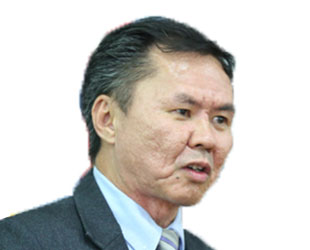Speakers

Deputy Director General - Operation Sector, National Disaster Management Agency, Malaysia

Director, EASOS (Earth & Sea Observation System), United Kingdom

Coordinator, SEACLID/CORDEX Southeast Asia, Universiti Kebangsaan Malaysia, Malaysia

Technical Specialist (Climate Risk Management), Asian Disaster Preparedness Centre, Thailand

Director – Bangkok Office
Japan Aerospace Exploration Agency
Thailand

Assistant Director, Disaster Management & Operation Division, Malaysian Civil Defence Force, Malaysia

Head of Data, Information and Public Relations, National Disaster Management Authority, Indonesia

Manager
NTT DATA Corporation
Japan

Meteorological Officer, National Climate Center (NCC), Malaysian Meteorological Department, Malaysia

GIS Analyst
World Resource Institute
Indonesia

Environmental Scientist
DHI Water & Environmental Consultants
Malaysia

Ph.D. Senior Researcher
LX Spatial Information Research Institute
Korea
Asia Pacific continues to be the world’s most disaster prone region, home to home to 40% of natural disasters and 84% of people affected by natural disasters worldwide. These disasters (earthquakes, cyclones, floods, landslides, extreme weathers, etc.) not only cause fatalities but also result in environmental imbalances and severe economic losses. As per studies, the region incurred more than $45.1 billion in economic damage in the year 2015 and even higher indirect losses. Disasters and climate change impacts, also are global phenomenon with impacts across borders. Also, no single department, organisation, country or group of countries have all the resources to achieve the required objectives on its own. Hence, initiatives require international collaboration and multi-disciplinary approach to address geohazards by ensuring that national investments are coordinated and mutually supported. This will also strengthen the ability of governments to minimise impacts. Rather than dealing with hazards as an emergency when it strikes, the need of the hour is to address from a long-term perspective to protect livelihoods and safeguard economies.
Geoinformation and geospatial technologies are gaining importance in addressing disaster and climate change impacts due to its information driven tools. This facilitates thoughtful and informed decision-making as desired by the policy makers at the national and international levels. Effective impact management is possible only with integrated information systems comprising of on-ground emergency response based on geospatial information, and digital databases.
Keeping this in mind, Geospatial Media & Communications is organising a seminar on ‘Disaster Management and Climate Change,’ on the occasion of GeoSmart Asia. The seminar will bring together diverse stakeholders engaged in disaster and climate change initiatives including government organisations, academia and researchers, project heads, technology providers, app developers, and multilateral organisations on a common platform.
Agenda
- Discuss initiatives for adoption of geospatial information in mitigating disaster
- Showcase best practices
- Discuss the pre-requisites for enhanced adoption of geospatial technology in mitigating disaster
- Present new technologies Discuss avenues for collaboration amongst organisations
Session 1: Strengthening readiness and resilience with geospatial technology
Geospatial technology addresses disaster and climate issues in various ways, but its maximum utility can be achieved through an integrated management. This requires technology awareness at decision-making and planning level, technology expertise at implementation level expertise, availability of actionable information, and coordinated approach amongst the various departments involved. The session will focus on presentations and discussions pertaining to these issues.
Session 2: Advancements in geospatial tools
Geospatial technologies such as remote sensing, 3D modelling and visualization, GIS, GPS, location-based apps, and sensors provide up-to-date and reliable data to support the major components of geohazard management including early warning, preparation, prevention, response, recovery, rehabilitation and reconstruction. These tools also help understand environmental conditions and patterns that can help analyse climate change impacts and take necessary action accordingly. The session will present new technologies and applications of geospatial technology in mitigating climate and disaster impacts.
